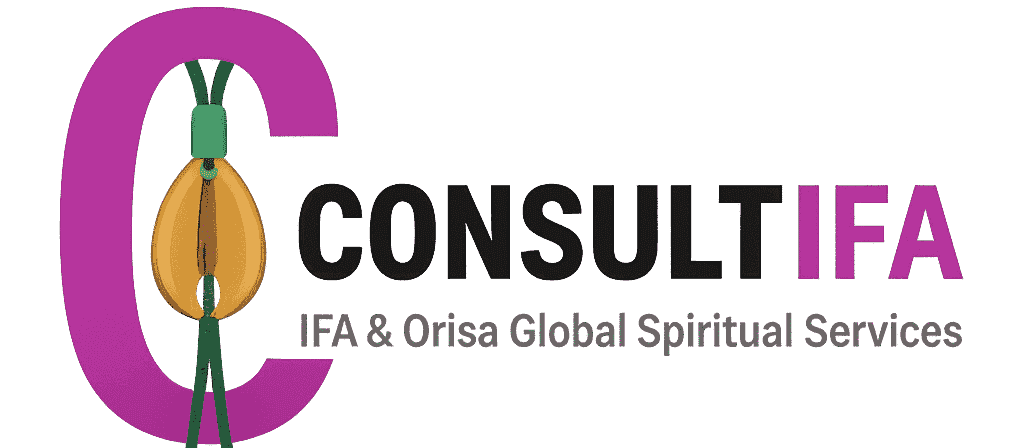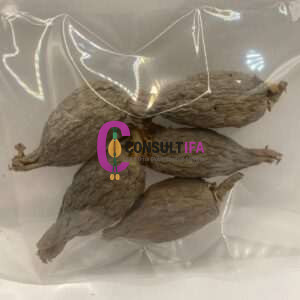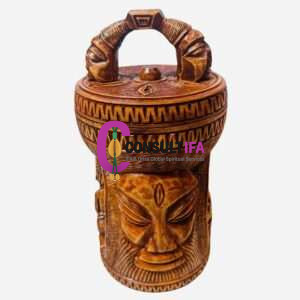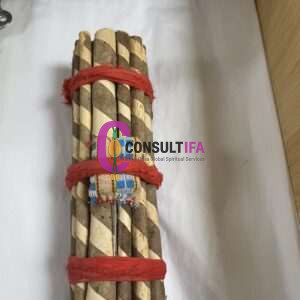In the diverse realm of Yoruba and Santería traditions, Ochosi Orisha holds a unique place. This deity, known for his attributes of hunting and justice, is deeply respected in these religious practices. With his crossbow and arrows in hand, he navigates the wilderness, ensuring balance between people and nature. His personality reflects the warrior spirit, embodying both strength and fairness.
As we delve into this article, we will explore the significance of Ochosi in these spiritual practices. From his role as a patron of animals and forests to his relationship with food and work, we aim to provide an in-depth understanding of this revered entity. The journey through the forest with Ochosi promises to be enlightening.
Ochosi Orisha: An Overview
A Glimpse into Ochosi’s Origins and Attributes
Originating from the Yoruba people of West Africa, Ochosi (also known as Oshosi or Ososi) is a revered figure. He’s known as the divine hunter and represents the spirit of pursuit and the search for a higher understanding.
| Name Variation | Cultural/Religious Context |
|---|---|
| Ochosi | Yoruba (Nigeria) |
| Oxóssi | Candomblé (Brazil) |
| Oshosi | Umbanda and Santería (Afro-Brazilian and Afro-Cuban) |
| Oxosi | Afro-Brazilian religious contexts |
| Ochossi | Diasporic practices of Yoruba religion |
| Ososi | Found in literature or discussions about Yoruba spirituality |
| Osoosi | Academic or literary texts on Yoruba spirituality |
Ochosi is often depicted with a bow and arrow, symbolizing his role as a hunter. His attributes also include insightfulness, strategic thinking, and an unwavering focus.
The Role of Ochosi in African Religious Traditions
In traditional African religious practices, particularly those of the Yoruba faith, Ochosi plays a significant role. He’s seen as a provider who ensures sustenance through hunting.
As an Orisha (deity, gods and goddess in Yoruba traditions), he also holds sway over justice and law enforcement. This connects him to Ogun, another orisha associated with ironworking and warfare.
Ochosi is not just about physical hunting but also symbolic hunting for knowledge and wisdom. This makes him crucial in religious ceremonies where followers seek spiritual growth.
Influence on Modern Interpretations and Art Forms
The influence of Ochosi extends beyond religious rituals into modern art forms. Many artists draw inspiration from his symbolism to create thought-provoking pieces that reflect his essence.
In music, dance, visual arts, literature – you’ll find traces of this divine hunter. Songs invoking his name are common in Afro-Brazilian genres like Candomblé music.
Moreover, many contemporary artists incorporate elements associated with Oxossi into their works to convey messages about perseverance, determination, and the pursuit of knowledge.
Understanding Ochosi, the Orisha of Hunting
Ochosi is deeply associated with hunting and holds a significant place in Yoruba tradition. His unique attributes set him apart from other Orishas.
The Hunting Affiliation of Ochosi
Ochosi is known as the Orisha of hunting, he embodies the spirit and essence of the hunt.
Hunting, in this context, doesn’t only mean chasing wild animals in the forest. It’s about seeking knowledge, understanding mysteries, and pursuing goals relentlessly. Ochosi symbolizes this constant pursuit.
For example, imagine you’re trying to solve a tough math problem or working hard to achieve your dream job. In these situations, you’re “hunting” for solutions and success – just like Ochosi!
Significance of Hunting in Yoruba Tradition
In Yoruba culture, hunting isn’t merely an activity; it’s a way of life. And guess who’s at the center of it all? Yes, it’s our dear Ochosi!
The hunter figure is revered because they provide food and protection to their community. They embody strength and resilience – qualities that are highly valued by the Yoruba people.
Moreover, hunters have deep knowledge about nature and its secrets which aligns them closely with spiritual realms – making them essential figures both physically and spiritually.
What Makes Ochosi Unique Among Other Orishas?
Now let’s talk about what makes Ochosi stand out among other Orishas.
Firstly, his association with hunting sets him apart instantly. But there’s more to him than just that!
He represents abundance because he ensures that his followers never lack necessities by delivering successful hunts.
Also unique to Ochosi is his connection with forests – considered sacred spaces full of life’s secrets in Yoruba belief system.
Finally, he has a strong association with arts, especially music and dance. These forms of expression are considered ways to communicate with the spiritual world, further solidifying Ochosi’s unique position among other Orishas.
Role of Ochosi in Yoruba Tradition
Yoruba tradition holds Ochosi, the Orisha of Hunting, in high regard. This section highlights his significance, explores related myths and stories, and discusses his impact on societal norms within the Yoruba community.
Examination of Yoruba Views on Ochosi
In the Yoruba tradition, Ochosi is revered as a symbol of survival and sustenance. He’s seen as a provider who uses his hunting skills to ensure that everyone has enough to eat.
He’s also considered an advocate for justice. Many believe he uses his bow and arrow not only for hunting but also to protect those who are innocent or wronged.
Myths Involving Ochosi in Yoruba Tradition
There are various fascinating stories about Ochosi in the Yoruba tradition. One popular tale tells how he once saved a town from starvation during a severe drought.
According to this story, all crops had failed and people were dying of hunger. Then one day, Ochosi appeared with game from the forest which fed everyone and saved them from certain death.
Another myth involves him being tricked by Eshu, another Orisha known for mischief-making. Despite being deceived into shooting himself with an arrow, Ochosi survived due to his resilience and determination.
Impact of Ochosi on Societal Norms in Yorubaland
Ochosi’s influence extends beyond mythology into everyday life within the Yoruba community. His principles have shaped societal norms significantly.
For instance, hunting is highly valued as it was believed that hunters had special connections with spirits like Ochosi who could guide them through forests safely. This respect for hunters has persisted even today where they’re still viewed as important members of society.
Moreover, attributes associated with Ochosi such as bravery, resourcefulness and fairness are highly esteemed. These qualities are encouraged in individuals, shaping the character of the Yoruba people.
Ochosi’s Significance in Santería
Ochosi holds a unique place in both Yoruba tradition and Santería practices. Let’s delve into the nuances of this deity’s role across these two contexts.
Comparison Between Roles in Yoruba Tradition Versus Santería Practices
In Yoruba tradition, Ochosi is revered as the deity of hunting and forests. He is known for his keen eyesight and sharp instincts.
However, in Santería, an Afro-Cuban religion that blends Yoruba traditions with Catholicism, Ochosi takes on additional roles. Here, he becomes not just a hunter but also a provider and protector.
For instance, followers often turn to him for guidance when seeking sustenance or safety. This dual role illustrates how syncretic religions like Santería can adapt traditional deities to fit new contexts.
Explanation for Differences or Similarities Observed Between These Two Contexts
The variations in Ochosi’s roles across these two traditions can be attributed to historical influences, particularly the concept of syncretism. When African slaves were transported to Cuba, they were compelled to camouflage their deities as Catholic saints, enabling them to secretly continue their worship. This blending of religions, known as syncretism, is the primary reason for the observed differences.
As such, Ochosi became associated with Saint Hubert and Saint Sebastian, both revered within Catholicism as protectors and providers. Hence the expanded role within Santería practices.
On the other hand, similarities persist because at its core, Santería seeks to preserve Yoruba traditions. Thus aspects like Ochosi’s association with nature and hunting remain constant across both contexts.
Discussion About How Santería Followers Interpret and Honor This Deity
Santeria followers honor Ochosi through rituals known as ‘bembé’. During these ceremonies, they offer fruits and vegetables symbolizing abundance provided by this deity.
Moreover, devotees wear green beads representing his connection with nature while praying for his protection. In doing so, they acknowledge Ochosi’s dual role as a provider and protector, appreciating his significance within their faith.
Symbols and Representations of Ochosi
Identifying Common Symbols
Ochosi, the orisha of hunting and forests in Santería, is often associated with certain symbols that reflect his characteristics. The bow and arrow are his primary symbols, representing his role as a hunter. He’s also linked to the color green, symbolizing nature and life.
Symbol Meanings in Cultural Context
In the cultural context of Santería, these symbols carry deep meanings. The bow and arrow signify precision and focus, qualities attributed to hunters like Ochosi. Green, on the other hand, represents abundance and prosperity derived from nature.
The deer is another important symbol tied to Ochosi. It embodies gentleness and gracefulness but also alertness–a trait essential for survival in the wild.
Influence on Ceremonies and Offerings
These symbolic representations play a significant role during ceremonies or offerings for Ochosi. For instance, followers might offer fruits or other food items associated with these symbols to pay homage to him.
During rituals dedicated to Ochosi, participants often wear green clothing or accessories as a sign of respect towards this deity. Similarly, statues or images of deer may be prominently displayed during such ceremonies.
Moreover, arrows made from specific types of wood are used in rituals as they’re believed to carry spiritual energy that can invoke Ochosi’s presence.
The Intricate Relationship Between Ochosi and Ogun
Ochosi and Ogún, both highly revered Orishas in the Yoruba religion, share an intricate and profound relationship. They are often portrayed as brothers, with Ogún being the older one. This familial bond signifies a deep connection and mutual respect between them, which is reflected in their shared roles as protectors and providers.
Ogún, known as the deity of iron, war, and labor, is often associated with the raw force and power of nature. On the other hand, Ochosi, the deity of hunting and forests, represents the skill, precision, and patience required to survive in the wild. Despite these differences in their domains, they share a common purpose: to ensure the survival and prosperity of their followers.
The relationship between Ogún and Ochosi can also be seen as complementary. While Ogún clears the path with his machete, Ochosi hunts in the cleared path. This symbiotic relationship is often used to symbolize the balance between force and finesse, between power and precision. It’s a reminder that both aspects are necessary for survival and success.
In many rituals and ceremonies, offerings are made to both Ogún and Ochosi. This is done to seek their blessings and guidance, reinforcing their importance in the lives of their followers. Despite their distinct roles and personalities, the bond between Ogún and Ochosi remains strong, reflecting their shared commitment to protecting and providing for their people.
Tthe relationship between Ochosi and Ogún is one of mutual respect, collaboration, and balance. They serve as powerful symbols of the various aspects of nature and survival, reminding us of the importance of both strength and skill in overcoming life’s challenges.
Ochosi in Modern Interpretations and Art Forms
Modern arts have a knack for portraying deities, and Ochosi is no exception. This section explores how artists and writers depict this deity, the influence on contemporary culture, and whether these portrayals align with traditional understanding.
Artists’ Depiction of Ochosi
Artists often draw upon their imagination to portray deities like Ochosi. They use colors, shapes, and symbols to tell his story.
For instance, some paintings depict him as an agile hunter with a bow and arrow. His eyes are keenly focused on his target, embodying his role as the provider.
In other works of art, he’s shown surrounded by animals. This highlights his connection with nature and wildlife.
These artistic interpretations not only showcase creativity but also help us understand the deity better.
Influence on Contemporary Culture
The depiction of Ochosi in modern art has significantly influenced contemporary culture. His image is seen in murals across cities, symbolizing protection and prosperity.
His tales are told through songs, dances, and theatrical performances. Many people wear jewelry or tattoos featuring his symbols as a sign of respect or devotion.
This cultural impact extends beyond religious beliefs into popular culture–showing the power of art to shape societal norms.
Conclusion
Ochosi, the Orisha of hunting, plays a pivotal role in both Yoruba tradition and Santería. His symbols and representations, rich with cultural significance, continue to influence modern interpretations and art forms.
The ceremonies and offerings dedicated to Ochosi further highlight his importance within these spiritual practices. As we reflect on Ochosi’s enduring presence and impact, it becomes clear that he is not just a deity but a symbol of survival, resourcefulness, and the harmony between humans and nature.
Getting to know Ochosi helps us value the gods in African and African Diaspora customs more. It also gives us a deeper understanding of their important teachings about life. This encourages us to dive deeper into the complex web of ideas that form our universe. Let’s continue this journey of discovery together by delving deeper into the fascinating world of Orishas.
FAQs
What is Ochosi Orisha?
Ochosi is an Orisha, a deity in the Yoruba religion. He is known as the divine hunter and represents the pursuit of knowledge.





